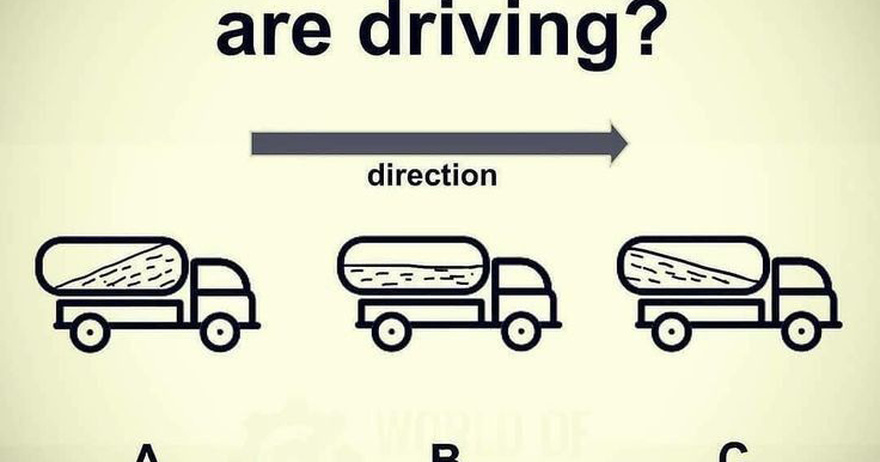Trucks on the road—sounds like a simple topic, right? But what if we asked you to determine which truck is actually moving? This riddle might seem straightforward at first, but once you start analyzing the details, you’ll realize it’s not as easy as it appears.
Are you ready to challenge your brain? Let’s dive deep into this tricky puzzle and break it down step by step.
The Riddle: Which Truck Is Driving?
Picture three trucks on a road, each loaded with cargo. You’re asked a seemingly simple question:
“Which of these trucks is actually moving?”
At first glance, you might think the answer is obvious. But is it really? To solve this riddle, we need to look beyond what we see and apply some logic and physics principles.
Common Mistakes People Make
Many people rush to answer riddles like this without carefully considering all the details. Here are the most common mistakes:
Relying on first impressions – Most assume they can tell which truck is moving just by looking.
Forgetting about physics – Movement isn’t just about position; forces like inertia and friction play a big role.
Ignoring how cargo behaves – The way the cargo is positioned in the truck provides important clues.
Video: The most unexpected answer to a counting puzzle
Breaking Down the Riddle: Step-by-Step Analysis
To figure out which truck is moving, we need to analyze the behavior of the cargo in each truck. Let’s take a closer look at each option.
Truck A: The Cargo Is Aligned With the Truck’s Motion
At first, this seems logical—if the truck is moving forward, wouldn’t the cargo stay aligned? Not necessarily.
If the truck were really moving forward, inertia would cause the cargo to shift backward unless it’s secured.
Since the cargo remains perfectly aligned, it suggests the truck isn’t actually in motion—otherwise, we’d expect some displacement.
Truck B: The Cargo Is Facing Backward
This setup creates an interesting illusion. Some might think this truck is moving in reverse, causing the cargo to appear shifted.
However, without a securing mechanism, the cargo would not stay in place if the truck were moving backward—it would slide or fall.
This suggests that Truck B isn’t moving either.
Truck C: The Cargo Is Positioned to Stay in Place
Now, let’s look at Truck C. The cargo appears stable and follows the direction of travel.
According to physics, if a truck accelerates forward, any loose cargo inside will tend to remain at rest due to inertia.
But if a truck is already moving at a constant speed, the cargo will stay in place, because there’s no additional force pushing it backward or forward.
This means Truck C is the one that’s actually in motion!
Final Answer: Truck C Is Driving
Physics confirms it—Truck C is the moving truck. Its cargo behaves exactly as it should if the truck is in motion.
Why This Riddle Is So Tricky
This puzzle plays on our natural assumptions about movement. We tend to focus on the trucks themselves rather than how the cargo would react if the truck were truly moving.
The key to solving this is understanding inertia and how objects behave in motion. When a vehicle moves:
-Unsecured cargo shifts due to inertia
-Stable cargo suggests continuous motion
-A lack of displacement means the object is stationary
Lessons from This Riddle
So, what can we take away from this puzzle?
-Careful observation is key – Don’t jump to conclusions based on first impressions.
-Physics is everywhere – Even everyday objects follow the laws of motion!
-Challenge your assumptions – Sometimes, the most obvious answer isn’t the correct one.
Put Your Thinking to the Test!
Now that you know the answer, try testing your friends with this riddle. See if they can figure it out without looking up the explanation. You might be surprised at how many people get it wrong!
Want more brain teasers? Keep challenging yourself with riddles that make you think outside the box. The more you practice, the better you’ll get at spotting hidden details and solving tricky puzzles.
